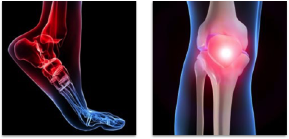
Jordi Sanchez-Ballester
FRCSEd FRCS Trauma & Orth
Consultant Foot, Ankle & Knee Surgeon
Fairfield Independent Hospital, St Helens
Spire Cheshire
Bone-Surgeon.co.uk
Fairfield Independent Hospital
Crank Rd
St Helens
Merseyside WA11 7RS
01744 739311
Spire Cheshire Hospital
Chris Davies
Fir Tree Close
Warrington WA4 4LU
0845 602 2500
Ball of the Foot Pain (Metatarsalgia)
Ball of Foot Pain (Literally) “Metatarsalgia” means pain in the metatarsals of the foot, or forefoot pain.
The pain is commonly on the sole of the foot and often sharp, described as similar to walking on pebbles or like having a stone in the shoe. However, there are a variety of possible causes of metatarsalgia and consequently the type of pain described varies also. Some people describe localised pain to one or two toes whilst others describe more generalised pain or burning pain.
Finding the correct diagnosis and hence cause of the metatarsalgia is essential to being able to advise the correct treatment. Sometimes more than one diagnosis is present.
We will talk to you to gain clues from the history of your condition and will then examine you. Xrays and other investigations such as Ultrasound Scan or magnetic resonance imaging (MRI) may also be required and the surgeon will discuss these with you. Only when a diagnosis has been made can treatment be initiated.
Common causes
Problems with the mechanics of the foot (the way body weight is distributed)
Overweight
Overuse (eg sports)
Hallux valgus (bunions)
Hallux rigidus (arthritis of the big toe)
Problems with inflammation in the joints of the forefoot
Arthritis (various different types can affect the foot)
Gout
Problems with the bones
Fracture of a metatarsal
Metatarsal deformities
“Stress reaction” in a metatarsal (can precede a fracture)
Problems with the nerves
The most common nerve problem is called Morton’s neuroma. This occurs when one or more of the nerves supplying sensation to the toes are squeezed and irritated over a period of time causing scarring of the nerve and in turn more persistent pain in the forefoot (often including a burning pain and feeling of numbness in the affected toes).
Simple non-surgical treatments are effective for some people. Others may need surgery.
Non-surgical Treatments
If Morton's neuroma is diagnosed early, treatment will aim to reduce the pressure on the affected nerve. This is usually the nerve between the third and fourth toe bones (metatarsals).
Your GP or podiatrist (foot specialist) may recommend:
Changing the type of shoes you usually wear – shoes with a wider toe area may help ease the pressure on the nerve in your foot
Using orthotic devices – such as a support for the arch of your foot to help relieve the pressure on the nerve
Painkilling medication – anti-inflammatory painkillers or a course of steroid injections into the affected area of your foot may help ease the pain and inflammation.
Injections – Steroid and local anaesthetic is injected into your foot using ultrasound for guidance; studies have shown that this type of treatment is temporally effective
Resting your foot and massaging your toes may also help to relieve the pain. You can make an ice pack by freezing a small bottle of water and rolling it over the affected area.
Cryotherapy is a non-surgical treatment where very cold temperatures are used to destroy affected nerve tissue and disrupt its blood supply. It can be used to treat Morton's neuroma but isn't widely available in the UK.
Surgery
Surgery for Morton's neuroma is usually a treatment of last resort. It may be recommended if you have severe pain in your foot or if non-surgical treatments haven't worked.
Surgery is usually carried out on day case bases, which means you won't need to stay in hospital overnight. The operation can take up to 30 minutes.
Most people (about 75%) who have surgery to treat Morton's neuroma have positive results and their painful symptoms are relieved.
Problems With The Toes
Deformed toes rubbing in the shoe (hammer toes deformities).
DOWNLOAD: Mortons Neuroma Surgery Patient Information leaflet
More info from the BOFAS website :
http://www.bofas.org.uk/Patient-Information/Metatarsalgia